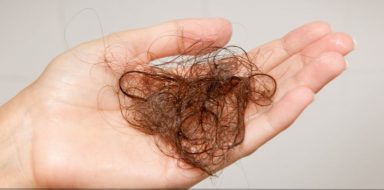What is Palmoplantar Psoriasis?
Palmoplantar psoriasis (PPP) is a rare condition that is also considered to be autoimmune, inflammatory and recurrent. It is characterized by blisters on the hands and the feet. The blisters can be large or small, and they are filled with yellow fluid.
PPP is a subtype of psoriasis, which affects 2% to 5% of the world’s population. Of those suffering with psoriasis, 3% to 4% will also suffer from PPP.
At this time, researchers have not identified a cause for PPP. However, they have been able to narrow down several factors that seem to increase the risk for development of PPP.
- There may be a genetic component. Carriers of the human leukocyte antigen (HLA) Cw6 seem to be at a higher risk. In addition, there seems to be some type of link between variations of the CARD14 gene and certain genes in the IL-19 family.
- There may be environmental triggers. Examples of environmental triggers include smoking, exposure to certain skin irritants and friction to the areas where PPP occurs.
- Certain medical conditions also seem to be a trigger. These illnesses include type 1 diabetes, streptococcal tonsillitis, arthritis of the thorax and gluten intolerance.
What are the Symptoms of Palmoplantar Psoriasis?
As discussed before, PPP is characterized by blisters on the hands and the feet; these blisters can be large or small and are filled with a yellow fluid.
Other symptoms include:
- Feelings of itchiness, pain, or burning to the affected area.
- Erythema (redness) to the affected area.
- Scaly plaques that occur several days after the formation of blisters.
- Cracking and bleeding of the skin.
- Thickening and ridging of the nail beds, as plaque psoriasis is also typically present.
Treatment Options for Palmoplantar Psoriasis
As PPP is autoimmune in nature, there is no cure. Treatment is aimed at symptom reduction as well as reducing the presence of lesions and blisters.
Since PPP is most common in smokers, smoking cessation is recommended. For those who have PPP related to a skin irritant, avoiding whatever irritates the skin is extremely important. Stress may increase the presence of lesions and blisters and, as such, reducing stress levels is important.
The use of medications is also used to treat PPP. It is not uncommon for providers to utilize a combination of different therapies.
Topical Corticosteroids
Topical corticosteroids are the first-line treatment for PPP. These are applied twice daily and are utilized for a period of weeks to months.
The most prescribed topical steroid is calcipotriene. This cream can also be prescribed with oral corticosteroids, such as prednisone, to improve the inflammation associated with PPP.
Prion diseases are a group of neurodegenerative diseases caused by prions, a protein that causes normal proteins in the brain to function abnormally.
Light Therapy
Light therapy is the second-line treatment for PPP. The use of light therapy is thought to slow down the speed that skin cells grow.
Light therapy typically is initiated by the person with PPP exposing their skin to 5–10 minutes of sunlight each day. The length of time is gradually increased to 30 minutes. A photo-sensitizing agent, called psoralen, may be prescribed.
It is important to remember to apply sunscreen to areas not exposed to the sun.
Methotrexate and Cyclosporine
Methotrexate and cyclosporine are used cautiously because they are systemic, meaning they affect the entire body.
Methotrexate is prescribed for a period of three to six weeks. Cyclosporine is prescribed for up to one year. Both contain risks; methotrexate cannot be used in pregnancy and cyclosporine should be used cautiously because it can affect renal function and can cause or worsen hypertension.
Biologics
Biologics are prescribed to people who fail other treatments or who cannot complete a course of topical or systemic medications. These medications work on the immune system.
Common biologics include:
- Interleukin (IL)-12/23 antagonist - ustekinumab (Stelara)
- IL-17 antagonists - secukinumab (Cosentyx)
- Phosphodiesterase 4 inhibitors - apremilast (Otenzla)
Oral Retinoids
These medications serve a couple of functions: they can reduce symptoms, such as redness and swelling, and they can reduce skin cells that are growing too fast. A common oral retinoid is acitretin (Soriatane).
The Bottom Line
PPP is a chronic, autoimmune condition. It can cause significant discomfort, especially as the lesions are located on the palms and on the bottom of the feet. Treatment is aimed at symptom reduction and reduction of the lesions and blisters.







